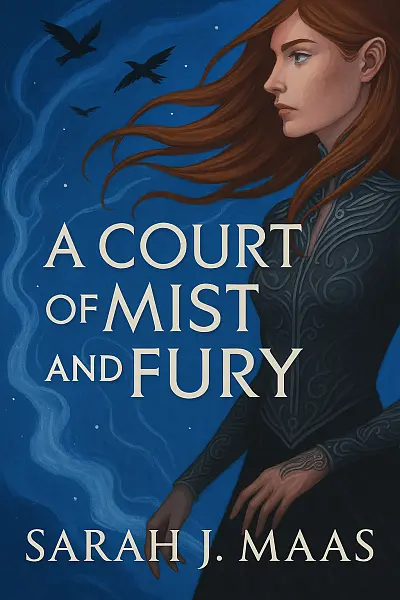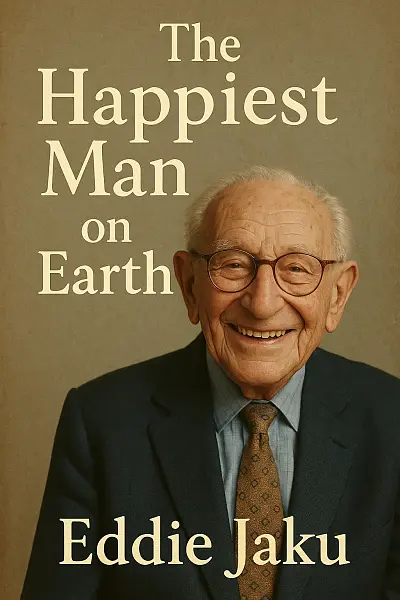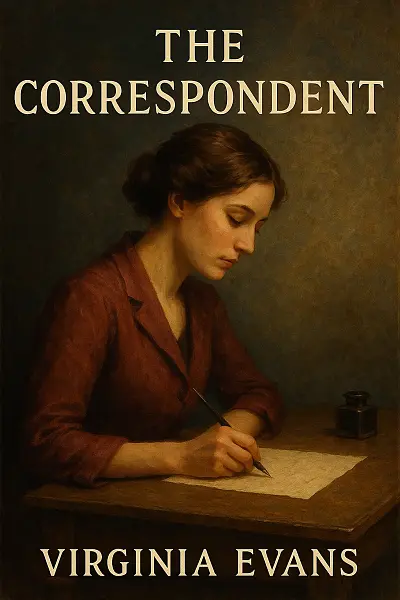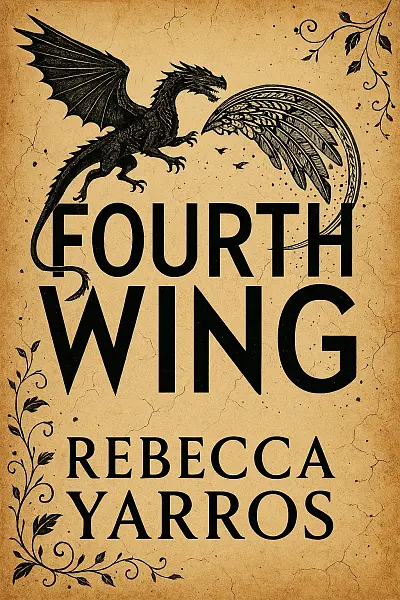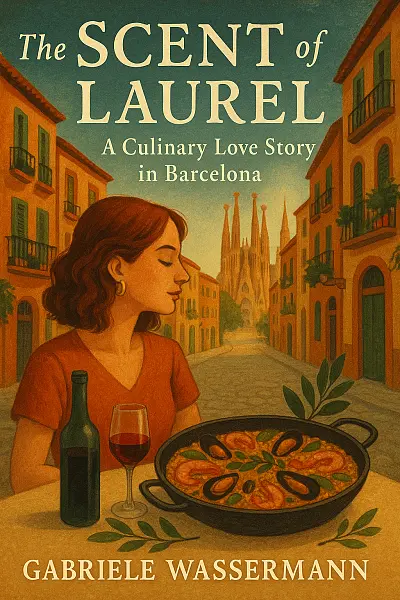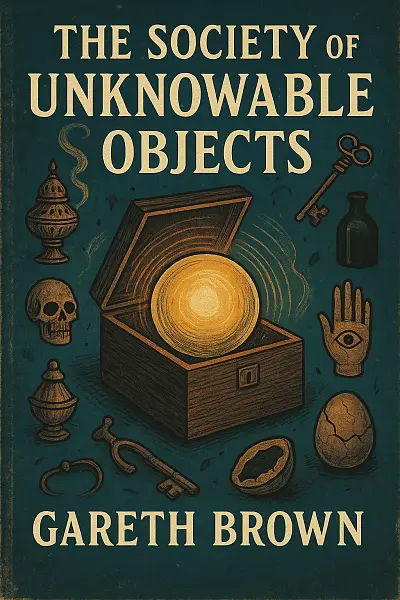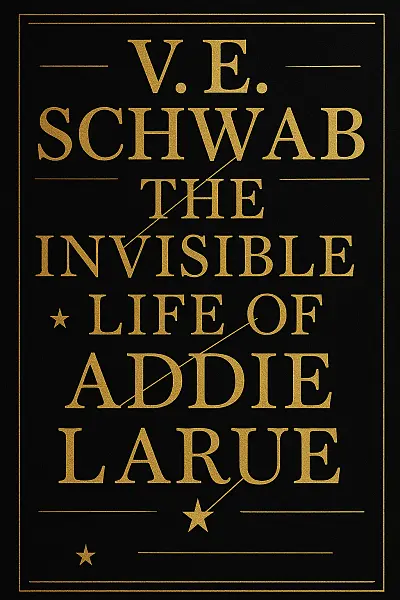
The Invisible Life of Addie LaRue
by: V.E. Schwab
France, 1714: Addie LaRue dreams of freedom, desperate to escape a predetermined life. In a reckless moment, she strikes a deal for immortality—but is cursed to be forgotten by everyone she meets.
Suddenly, Addie’s existence becomes an endless parade of lonely days, clinging to stolen moments and trying to leave a mark on the world that always slips away. Her only companion is the dark god who doomed her, and every encounter starts anew.
Centuries pass—until Addie meets Henry in a tucked-away New York bookstore and, unbelievably, he remembers her.
Can she finally break free, or will love slip away like everything else? Schwab’s writing is lush and bittersweet, weaving magic and melancholy into every page.
"“To be forgotten is a curse, but to leave a mark, however small, is the quiet rebellion of a soul longing to be seen.”"
Literary Analysis
Writing Style
Atmosphere:
The Invisible Life of Addie LaRue is drenched in lush, haunting ambiance. Expect a moody, almost dreamy vibe—there’s a kind of velvety melancholy that drifts through centuries and cities, from candlelit French villages to bustling, neon-lit New York streets. Schwab’s settings are never just backgrounds; they’re alive, shadowed with longing and the shimmer of the uncanny. Everything feels touched by nostalgia and a faint ache, inviting you into a liminal world where time blurs and every room might hold a lingering ghost.
Prose Style:
If you swoon for lyrical writing, you’re in safe hands. Schwab serves up prose that’s evocative and poetic, rich with sensory detail and resonant metaphors. The narration leans toward the languid and introspective, full of little echoes and motifs that turn simple moments into something elegiac. The tone is intimate—almost whispering secrets directly to you. While it sometimes dips into sentiment and repetition, it’s consistently immersive, balancing the fantastical with deeply human emotions.
Pacing:
The book unfolds slowly, savoring its moments like a long, bittersweet sigh. It jumps between centuries, snapshots of past and present, drawing out tension through its puzzle-box structure. Don’t expect breakneck speed—this is a novel that wants you to linger, and sometimes that reflective pacing edges into meandering. But for patient readers, the gradual revelations and emotional stakes pay off, creating a rhythm that feels both meditative and inexorable.
Dialogue:
Conversations are intimate, often laced with longing and loss. There’s a poetic undercurrent to the dialogue, sometimes bordering on the theatrical, but mostly it’s about connection and what’s left unsaid. Characters speak in a way that feels slightly out of time, reflecting their histories—expect existential musings and heartfelt confessions more than snappy banter.
Mood and Feel:
The overall mood is bittersweet, romantic, and a touch mournful—think faded love letters and rain on cobblestones. Schwab’s writing makes the ephemeral feel vivid, mixing the thrill of unseen magic with the ache of loneliness. This is perfect for readers who crave stories where beauty and sorrow are twined together, and every line feels like it could soundtrack a rainy afternoon.
Narrative Perspective:
The book alternates between present and past, mostly following Addie in third-person, but with a close emotional lens. Expect intimate access to Addie’s thoughts and memories, blurring the boundary between her experience and your own. The structure heightens a sense of timelessness, with flashbacks weaving personal history directly into the present struggle.
Overall Impression:
Prepare for a transportive, atmospherically rich reading experience. Schwab invites you to savor every sentence, bask in lush descriptions, and lose yourself in longing—if you like your fantasy with a poetic edge and a slow burn, you’ll feel right at home.
Key Takeaways
- "A deal with a devil in 1714 Paris—immortality for the price of being forgotten"
- Addie’s defiant graffiti scrawled through centuries, desperate proof she ever existed
- "That jaw-drop meet-cute: Addie meets Henry, the only person who remembers her"
- Dreamy, poetic prose that tumbles through time and heartbreak
- Luc, the seductive darkness—every visit a chess match of wit and longing
- A haunting question: What’s the value of a life no one remembers?
- Bittersweet hope on every page, tangled with the ache of endless loneliness

A life forgotten by all, remembered only through immortal bargains.
Reader Insights
Who Should Read This
Okay, so here’s the scoop on who’s going to completely fall for The Invisible Life of Addie LaRue by V.E. Schwab — and who might want to pass it by:
If you’re into:
- Lush, lyrical writing that’s all about vibes and atmosphere, you’re going to get swept away by Schwab’s style.
- Stories that blend historical settings with a touch of magic—think Paris, rooftops, art, and centuries of lonely wandering? You’re in for a treat.
- Deep character studies where you really get inside the head of someone wrestling with immortality, loneliness, and what it means to leave a mark? This is absolutely your jam.
- That whole romantic-but-bittersweet feeling, mysterious strangers, and emotional pining? You will eat this up.
- Books that ask big questions about life, love, memory, and identity, and are just as much about the journey as the destination.
BUT—let me be real with you…
- If you need a fast-paced plot that never lets up, or lots of action, you might get restless here. The story definitely takes its time, and it’s way more about feelings and moments than wild twists.
- Not a fan of repetition or slower, reflective prose? This book sometimes circles back on themes and phrases, so it might not be your cup of tea.
- If you like your fantasy heavy on the magic system and lore—like Sanderson-style worldbuilding—this one is more magical realism and mood than epic spells or deep fantasy mechanics.
- Less interested in romance or introspective characters and more into big adventures? Probably not for you.
Bottom line:
If you love beautiful writing, a haunting love story, and you don’t mind lingering in the quiet moments, jump right in. But if you crave breakneck pacing or concrete worldbuilding, you might want to look elsewhere—no shade! Just different tastes, right?
Story Overview
Ever wished you could live forever, but with a catch?
The Invisible Life of Addie LaRue whisks readers through the centuries with Addie, a young woman in 18th-century France who bargains for immortality—only to discover she’s destined to be forgotten by everyone she meets. Prepare for a sweeping, bittersweet journey packed with art, love, loneliness, and a dash of magic, as Addie fights to leave her mark on a world determined not to remember her.
Main Characters
-
Addie LaRue: The defiant and spirited protagonist cursed to be forgotten by everyone she meets. Her centuries-long journey explores loneliness, resilience, and the desire to leave a mark on the world.
-
Luc: The mysterious god of darkness who grants Addie immortality in exchange for her soul. He’s both antagonist and seducer, embodying temptation and power while challenging Addie’s definitions of freedom.
-
Henry Strauss: A gentle, achingly human bookseller who becomes the first person in centuries to remember Addie. His own vulnerability and search for meaning offer a poignant mirror to Addie’s plight.
-
Estele: Addie’s childhood mentor, a wise village woman who teaches her about independence and survival. Though her presence is brief, Estele’s spiritual guidance leaves a lasting imprint on Addie’s worldview.
-
Bea: Henry’s loyal friend, whose warmth and support help ground both Henry and Addie in the present. She adds depth to the theme of found family and human connection.
If You Loved This Book
If you've ever been drawn into the haunting, lyrical pages of The Night Circus by Erin Morgenstern, you'll likely find yourself spellbound by The Invisible Life of Addie LaRue. Both novels spin tales of longing and impossible love, anchored by a touch of magic that quietly warps reality, and each is steeped in an atmosphere that feels both timeless and intoxicating. Likewise, fans of The Time Traveler’s Wife by Audrey Niffenegger may feel a familiar ache in Schwab’s exploration of memory, connection, and the heartbreak of being unseen—the way Addie’s curse pulls at the fabric of her relationships echoes that unforgettable sense of loving across insurmountable divides.
On screen, there’s a definite kinship with the television series Lucifer. Much like Lucifer’s devilish deals and the alluring blend of the mundane and the magical, Schwab’s story invites readers into a world where bargains with supernatural forces carry profound consequences. The blend of romance, philosophical musings, and the bittersweet dance between mortality and immortality connects these two in a way that'll absolutely hook anyone who craves a bit of myth with their drama.
Expert Review
What if the greatest ache in a life long-lived isn’t loneliness, but invisibility? The Invisible Life of Addie LaRue challenges us to consider the worth of memory, the shape of identity, and the cost of immortal anonymity. Schwab deftly constructs a world where a life can stretch across centuries, yet not a single soul will remember the woman living it. How do we leave a mark—and does that mark matter if it exists for a moment or forever?
Schwab’s writing is lush and immersive, painting atmospheres with a painter’s attention to color and shadow. The narrative loops fluidly between past and present, balancing the historical tapestry of 18th-century France with electric slices of modern life. Schwab’s use of repetition intensifies Addie’s curse—each ephemeral encounter echoes, making the reader complicit in her forgottenness. Her prose is highly sensory, and moments often linger a beat too long, immersing the reader in Addie’s perpetual longing.
Stylistically, the novel leans heavily on lyrical language and recurring motifs—rivers, shadows, spirals, the soft tremor of hope. Schwab takes risks with non-linear structure: time is slippery, bending back on itself, using interludes and vignettes to reinforce the story’s dreamy, half-remembered quality. Interiority is richly rendered, particularly for Addie; secondary voices, though vivid, sometimes feel less layered.
At its heart, this is a novel about the hunger to be seen, the need to belong, and the subtle violence of being erased. Schwab investigates the ways history can silence women—how so many lives go unrecorded except in the briefest traces, in art, music, fleeting smiles. There’s a haunting resonance to Addie’s constant navigation of selfhood without witness: what does it mean to exist when existence leaves no mark?
The book is also concerned with the ethics of bargains, the seduction of darkness, and the ways humans negotiate with their own desires. As Addie finds echoes of herself in art across centuries, Schwab slyly asks if creation itself—stories, lines, sketches—is the only true immortality. The novel’s meditation on love, mortality, and memory lands in the present moment, speaking to a culture obsessed with legacy and terrified of being forgotten.
Within the realm of contemporary fantasy and literary fiction, The Invisible Life of Addie LaRue distinguishes itself with its introspective, character-driven lens. Schwab’s oeuvre has always flirted with darkness and longing, but here she achieves a rare depth—think The Time Traveler’s Wife with a mythic twist, or Neil Gaiman’s bittersweet magic coupled with Kate Atkinson’s emotional complexity. For fans of existential, character-rich fantasy, this is a standout.
While the novel sometimes indulges in overwrought pacing and a length that risks dampening tension, it dazzles in its emotional clarity and memorable premise. Schwab’s ambition, lush prose, and fierce heart more than compensate for episodic repetition. Ultimately, Addie LaRue lingers—a bittersweet anthem for anyone who wants, desperately, not to disappear.
Community Reviews
I still hear Luc’s voice in my head and I’m not okay with it. He haunts every shadow, every heartbeat. How does a fictional devil get to be this charismatic and tragic at the same time? Schwab, you’ve ruined me.
so i picked up addie larue thinking it’d be a quick read but then that moment in the art gallery happened and suddenly i was wide awake at 3am, totally wrecked. how dare this book steal my sleep and my heart like that?
I legit COULDN’T STOP THINKING about Luc after finishing. That eerie charm, the way he just lingers—he’s the kind of character you want to punch and hug at the same time. Still haunted. 10/10 would bargain with the darkness again.
I’m still thinking about Luc, honestly. That guy just slipped into Addie’s immortal life making deals and tossing chaos like confetti. Can’t stop wondering if he’s the villain or the only one who gets her.
I haven’t slept since finishing this book. Addie’s loneliness just clings to your brain and refuses to let go. I keep replaying that night in Paris, wondering if I’d have made her choices. This story lingers like a shadow you can’t shake.
Cultural Context & Discussion
Local Perspective
The Invisible Life of Addie LaRue really hits home for French readers, especially those steeped in the country’s long history of resistance and rebellion. France’s past—think the French Revolution, the fight for liberté, égalité, fraternité—totally echoes Addie’s desperate bid for freedom and individuality. Her longing to leave a mark aligns so much with French existentialism (hello, Sartre and Camus fans), where meaning and legacy are everything.
On the flip side, Addie’s deal with a “devil” might make some older or more traditional French readers twitchy, considering the deep-rooted Catholic influences still lingering in parts of the culture. Yet the novel’s romantic melancholy and rich atmosphere totally vibe with local literary staples like Victor Hugo or Colette—full of longing, bittersweet passion, and the ache between memory and oblivion.
All in all, Schwab’s exploration of memory, autonomy, and love in a world determined to forget you fits beautifully into France’s own traditions of celebrating the rebellious, the dreamers, and the eternal struggle to be seen.
Points of Discussion
Notable Achievement:
The Invisible Life of Addie LaRue by V.E. Schwab has become a runaway bestseller, earning a spot on the New York Times Best Seller list and captivating a global audience with its unique blend of historical fiction, fantasy, and romance. The novel’s inventive premise and poignant exploration of identity and memory have sparked enthusiastic discussions across book clubs, social media, and critical circles, solidifying its reputation as a modern classic within speculative fiction.
